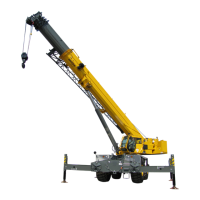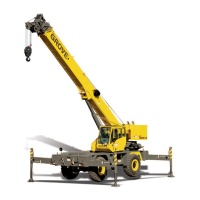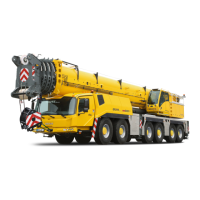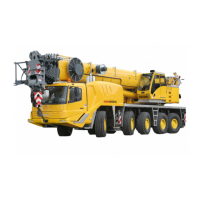Grove Published 04-04-2017, Control # 446-09 3-33
RT770E OPERATOR MANUAL OPERATING CONTROLS AND PROCEDURES
Crabbing
Crabbing is accomplished with the steering wheel and the
Rear Steer Control Switch. Depending upon which direction
the operator wishes to travel (crab), the steering wheel is
turned in the same direction as the Rear Steer Control
Switch. This permits driving the crane forward or backward in
a crabbing manner.
Four-Wheel Drive Operation
If more traction is required due to slipping or spinning
wheels, engage the front axle drive as follows:
1. Stop the crane by depressing the Service Brake Foot
Pedal.
2. Position the Transmission Shift Lever to the neutral (N)
position.
3. Position the Drive Axle Selector Switch to four-wheel
low.
NOTE: If the Drive Axle Selector Switch is positioned to
four-wheel low and the Service Brake Foot Pedal is
not depressed or the Transmission Shift Lever is
not in neutral (N) position, the Four-Wheel Drive
Indicator will flash and the four-wheel drive function
will not engage.
4. Select gear speed and direction of travel using the
Transmission Shift Lever and Knob.
5. Drive the crane as described under Traveling —
Forward, page 3-32.
6. Return the Drive Axle Selector Switch to the two-wheel
high position as soon as two-wheel traction will suffice
and crane motion has stopped; again, the Service Brake
Foot Pedal must be depressed and the Transmission
Shift Lever must be in the neutral (N) position to shift
from four-wheel low to two-wheel high.
Differential Lock Operation (Optional)
NOTE: The differential lock will not operate unless the
Drive Selector Switch is in the four-wheel low
position.
General
The purpose of the differential lock is to provide maximum
traction and control on poor road or highway surfaces. When
the differential locks are actuated, the clutch collar
completely locks the differential case, gearing, and axle
shafts together, thus maximizing traction to both wheels of
each axle. The lock position will also protect against spinout.
When normal driving conditions exist (during periods of good
traction), the differential locks should not be actuated. The
axles should be allowed to operate with differential action
between both wheels.
Follow the steps below when engaging/disengaging the
differential lock function.
CAUTION
Machine Damage Hazard!
Do not tow or pull in 1st gear with the Drive Axle Selector
Switch in two-wheel drive position. Severe damage to the
drive train will result. Always engage four-wheel drive.
CAUTION
Possible Machine Damage!
Before shifting from two-wheel drive to four-wheel drive
(or from four back to two), crane travel must be stopped.
Front-Wheel
Rear Wheel
Four-Wheel
Crabbing
FIGURE 3-16
6402-1
6402-2
CAUTION
Unexpected Operation!
When using the differential lock, steering characteristics
may be affected.
Try to use four-wheel drive to gain adequate traction
before using the differential lock.
Do not operate the differential lock when traveling
downhill; at speeds above 10 mph; on hard, dry surfaces;
and/or during axle spin-out.
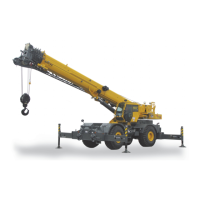
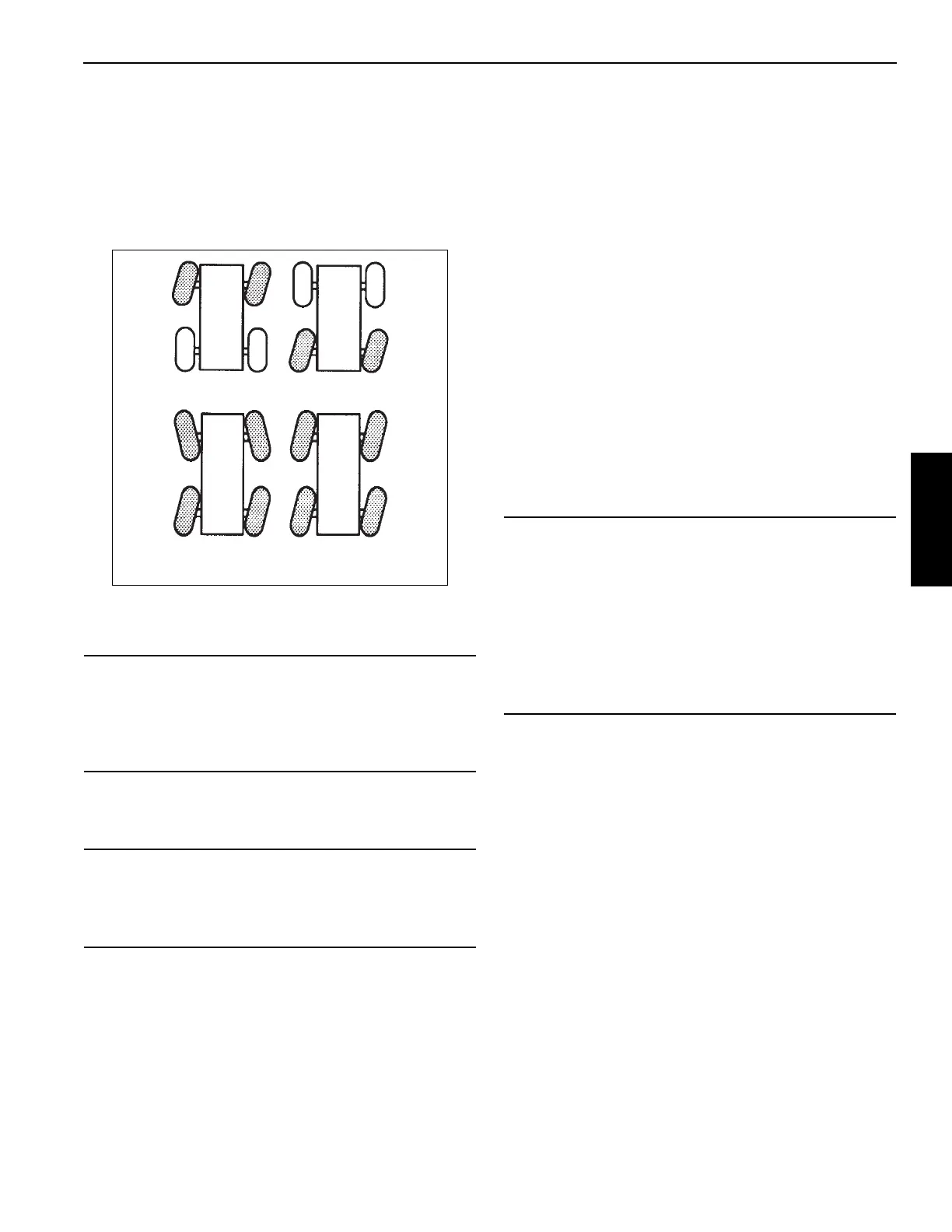